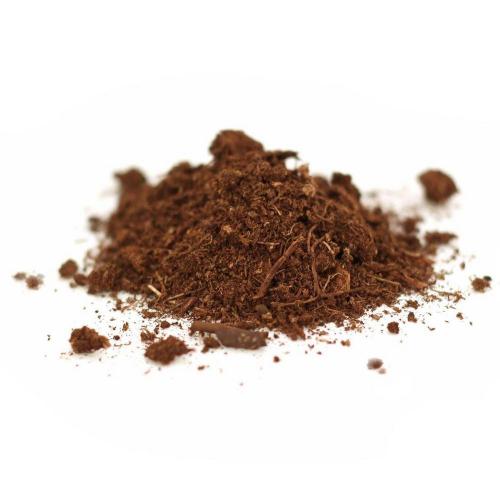Sphagnum peat moss:

Sphagnum moss:
 @Phurpa
@Phurpa If you are fortunate enough to have access to pine/ fir/ spruce bark, you would be much better served to use that instead of any form of milled wood chips or sawdust. The sapwood of hardwood trees is very high in cellulose which breaks down quickly and ensures significant immobilization of nitrogen (already mentioned). Heartwood and sapwood don't have nearly as much lignin (a natural polymer that makes woody plants woody) or suberin (another natural polymer often referred to as Mother Nature's water-proofing for plants because of it's ability to resist soil biota's efforts to cleave the hydrocarbon chains that make up the bark. Together, these natural polymers ensure that media made with conifer bark retain their structure far longer than media made from hardwood products or hardwood bark. When it comes to judging how productive a medium will be, the primary considerations are it's structure and it's ability to retain that structure. It's likely you'll use half the volume of a medium based on hardwood products due to soil organisms cleaving the bark's hydrocarbon chains and the carbon gassing off as CO2. Too, media with notable fractions of hardwood products in the mix will be inclined toward a pH high enough to preclude the use of dolomite as a liming agent.
The composting process is exothermic, meaning it gives off heat. If all else is equal, temperatures of roots grown in a sawdust-based medium can be 10-15*F higher (than if the sawdust was conifer bark) due to the accelerated rate at which soil life breaks down the soil particles. While this might not strike some as a serious issue, it IS serious. On those dog days of summer when soil temps are in the 100-110* range, that extra 10-15* can easily be a life/death matter to the plant material you're growing.
If you're going to save a bit of money here and there, I suggest you don't skimp on the soil. Before you can hope for a healthy plant, it's essential that you're able to first keep the root system happy. A good medium also allows you to water correctly w/o concern about over-watering; it makes fertilizing extremely easy; and, it will help you avoid a lot of problems that would otherwise BE problems because of the stress caused by inefficient or infected roots.
Vigor is a genetic trait and speaks more to what the plant's 'potential' might be. Vitality is a measure of how a plant deals with the cultural hand it's been dealt. Almost every plant has the genetic coding it takes to become a wonderful example of the species and cultivar/variety. Whether or not it ever becomes that exemplary specimen depends on how well the grower is able to identify and eliminate stress factors. In fact, it could be said that's our only job.
When growing in containers, you can put two-bit (cheap/ inexpensive) plants in a ten-dollar soil (a structurally stable, well aerated soil) and have a beautiful garden; but, if you put a ten-dollar plant in a two-bit soil the most highly favored outcome is disappointment.
Al

